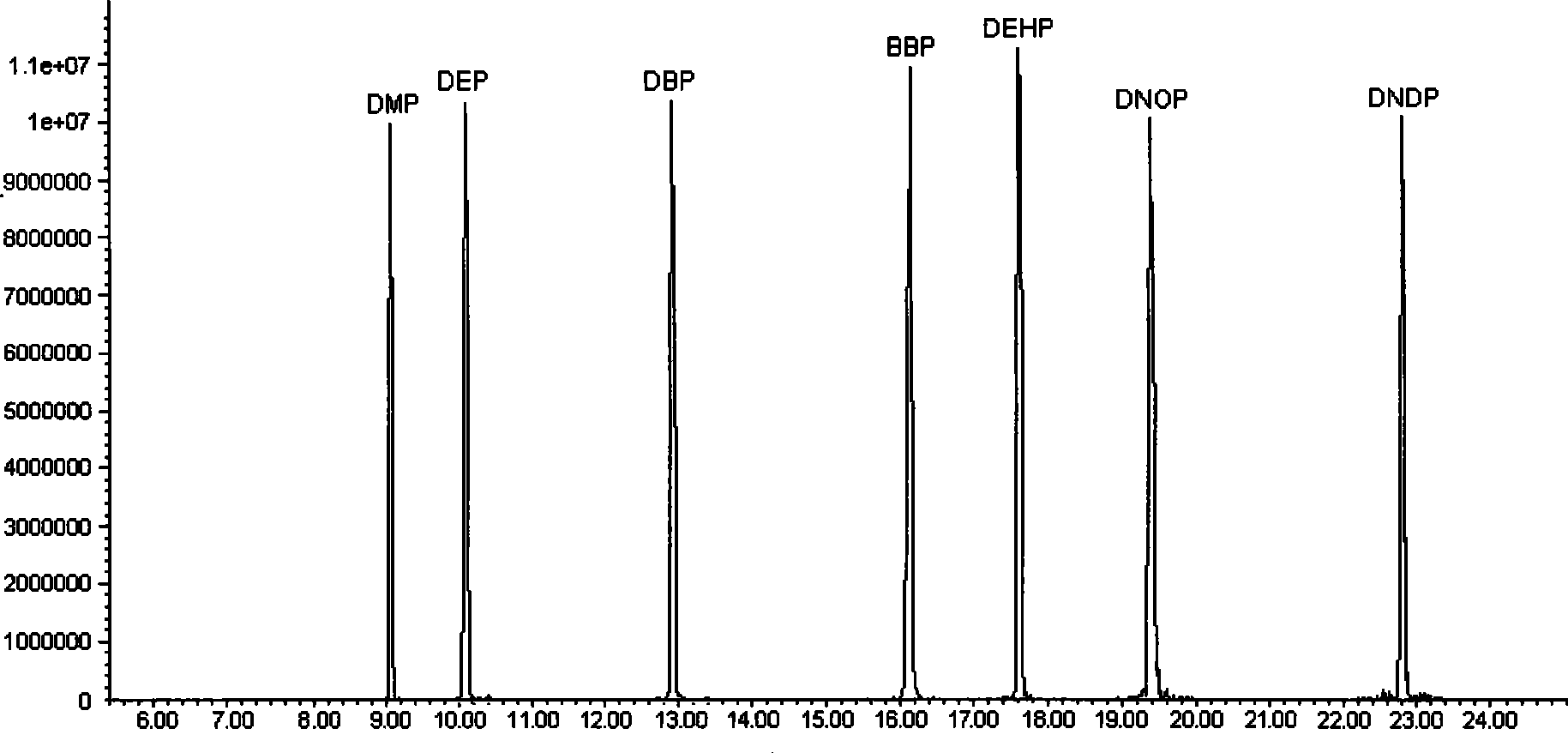Detection method for phthalate ester residue
A detection method and phthalate technology are applied in the detection field of phthalate residues, which can solve the problems of long extraction time and low extraction efficiency, and achieve the effects of less impurity interference, fast extraction speed and improved enrichment effect.
- Summary
- Abstract
- Description
- Claims
- Application Information
AI Technical Summary
Problems solved by technology
Method used
Image
Examples
Embodiment 1
[0034] Embodiment 1: Detection of release amount and total content of phthalates (PAEs) in solid samples.
[0035] Accurately weigh 0.5g of the pulverized test sample, put it in a 15mL sample bottle, use water, simulated saliva, acid sweat and normal saline as the extraction bottom liquid (the amount of the bottom liquid is 10mL), add the internal standard substance (ISTD) adjacent Didecyl phthalate (DNDP) (CAS No. 84-77-5) 100 μL was sealed with a bottle stopper lined with polytetrafluoroethylene septa, then soaked for 15 min, ultrasonically assisted in an ultrasonic bath at 40°C for 45 min, and transferred Leave the water bath, cool, purify and enrich through the solid-phase extraction column filled with multi-walled carbon nanotube materials, and wash the collection bottle with 2×3mL ether at the same time, pass the cleaning solvent through the column together, let it stand for 10min, then use 10mL ether Wash three times, and concentrate the eluent by rotary evaporation at ...
Embodiment 2
[0045] Example 2: Research on detection and analysis methods of phthalates (PAEs).
[0046] 1 Materials and methods
[0047] 1.1. Instruments and reagents:
[0048] Agilent HP6890GC gas chromatograph equipped with 5972MSD (with HP-5 elastic quartz capillary column (5% phenylpolysiloxane)); Dionex.ASE200 fast solvent extractor (with 11mL extraction pool, fiber extraction sleeve); SUPELCO Visiprep TM DL 12-hole solid-phase extraction device; Branson 200ULTRASONIC Cleaner ultrasonic instrument; Büchi Rotavapor R-200 rotary evaporator; Büchi Heating Bath B-40 water bath. Empty tubes for polypropylene SPE cartridges: Varian TM Or equivalent (with polyethylene sieve plate with 20μm aperture); multi-walled carbon nanotubes (specification, purity ≥ 95%, specification 10-20nm, length 5-15μm, ash content ≤ 0.2wt%, surface area 40-300m 2 / g) is provided by Shenzhen Nami Port Co., Ltd., and the modification and activation method of multi-walled carbon nanotubes is as follows: weigh a ...
PUM
 Login to View More
Login to View More Abstract
Description
Claims
Application Information
 Login to View More
Login to View More - R&D
- Intellectual Property
- Life Sciences
- Materials
- Tech Scout
- Unparalleled Data Quality
- Higher Quality Content
- 60% Fewer Hallucinations
Browse by: Latest US Patents, China's latest patents, Technical Efficacy Thesaurus, Application Domain, Technology Topic, Popular Technical Reports.
© 2025 PatSnap. All rights reserved.Legal|Privacy policy|Modern Slavery Act Transparency Statement|Sitemap|About US| Contact US: help@patsnap.com



